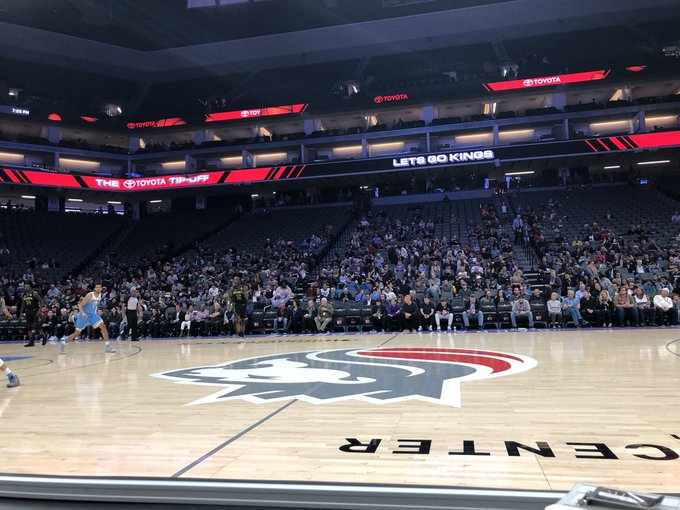By CHRISTINE HAUSER and MAGGIE ASTORMARCH 22, 2018
A day earlier, the Sacramento Police Department released footage from body cameras and a helicopter that had recorded the chase and fatal shooting of the man, Stephon Clark.
Mr. Clark, 22, was living with relatives in a south Sacramento house when the police responded to a 911 call about a man breaking car windows and a glass door in the neighborhood. Assisted by a sheriff’s helicopter, they encountered Mr. Clark in the dark yard and fatally shot him, the police said.
He did not have a weapon. A cellphone was later found near his body.
The department, when it released the three videos and two audio recordingslate on Wednesday, said the officers “believed the suspect was pointing a firearm at them.”
But it added that it “recognizes the significance of this incident and the impact it has on our community. We are committed to providing timely information and communicating openly with our community.”
The killing quickly came under scrutiny as another example of officers opening fire on an unarmed black person.
On Thursday, hundreds of protesters gathered at City Hall and spilled into the streets of downtown Sacramento, shutting down Interstate 5 in both directions during the evening rush. Then they blockaded the Golden 1 Center, where the N.B.A.’s Sacramento Kings were scheduled to play the Atlanta Hawks at 7 p.m.
The police blocked the arena, preventing most fans from entering. The game was played after a delay, but video and photos posted on Twitter, including by Jason Jones, a Sacramento Bee reporter, showed many of the stands empty.
“Due to law enforcement being unable to ensure ticketed fans could safely enter the arena, the arena remains closed and we ask fans outside to travel home,” the Kings said in a statement. “We will issue further information soon regarding a refund.”

The police department’s public information office did not respond to a phone call and email seeking more information about the protests, including precisely how large they were, whether there were any injuries and whether anyone had been arrested.
Mr. Clark’s relatives spoke to The Sacramento Bee after the shooting, saying that family members often entered the home through the garage, knocking on the back window because the doorbell was broken.
“The only thing that I heard was pow, pow, pow, pow, and I got to the ground,” said Sequita Thompson, Mr. Clark’s grandmother, adding, “I opened that curtain and he was dead.”
The department said this week that the officers involved have been put on paid leave as district and city attorneys investigate. Local community leaders and activists have called for greater police accountability.
“We need answers. The family needs answers,” a Black Lives Matter Sacramento organizer, Tanya Faison, said at a City Council meeting on Tuesday, KCRA news reported. “We need those officers to be fired because this was obviously a very huge injustice.”
The final moments of Mr. Clark’s life were captured on body cameras worn by two officers, who arrived on a dimly lit block of 29th Street around 9:30 p.m. on Sunday. Just after St. Patrick’s Day revelry, they had been working on a night that had “been nuts,” the dispatcher told the man who called in about a tall, thin man wearing a hoodie who was breaking windows.
The officers approached a house and spoke to the occupant through window bars, asking to search the property because of reports that a man had been seen fleeing after breaking a sliding door.
A sheriff’s helicopter hovered, its spotlight sweeping over backyards, as it relayed information about the movement of the suspect, darting through yards and pausing to peer into a car.
About seven uneventful minutes into the footage, the officers broke into a jog and headed to another house. A tight circle of light from a source held or worn by the officers bounced off the grass as the officers ran along the side of the yard, arms extended and guns drawn.

Peering around the corner of the house, they saw Mr. Clark in the backyard. An overlapping rush of words coincided with their fatal actions.
“Hey show me your hands — stop, stop,” one officer shouted. “Show me your hands, gun, gun, gun.” The shooting began.
“Show me your hands,” said one.
“Let’s see your hands,” said the other.
Each officer had fired 10 bullets by the time it was over, the department said.
From the perspective of the body cameras, the overgrown grass obscured most of Mr. Clark’s body on the ground.
“He is down, no movement,” an officer said, calling for additional units.
“Let’s see your hands,” one shouted.
The officers asked each other if they were all right. One told his partner to reload, as a tactical precaution. “I think I shot about five times,” one said.
“He is still down, he is not moving, we can’t see the gun.”
After a few minutes, speaking to the still body, an officer shouted, “Hey, can you hear us?”
A new voice could be heard, this time from a woman, apparently among the reinforcements, who called to Mr. Clark. “We need to know if you’re O.K.,” she said, adding that they could not help unless they knew he did not have a weapon.
“Sir, can you move? Can you hear us?” the woman asked.
He “approached us hands out, and then fell down,” said an officer.
The department later said that Mr. Clark was declared dead at the scene.


